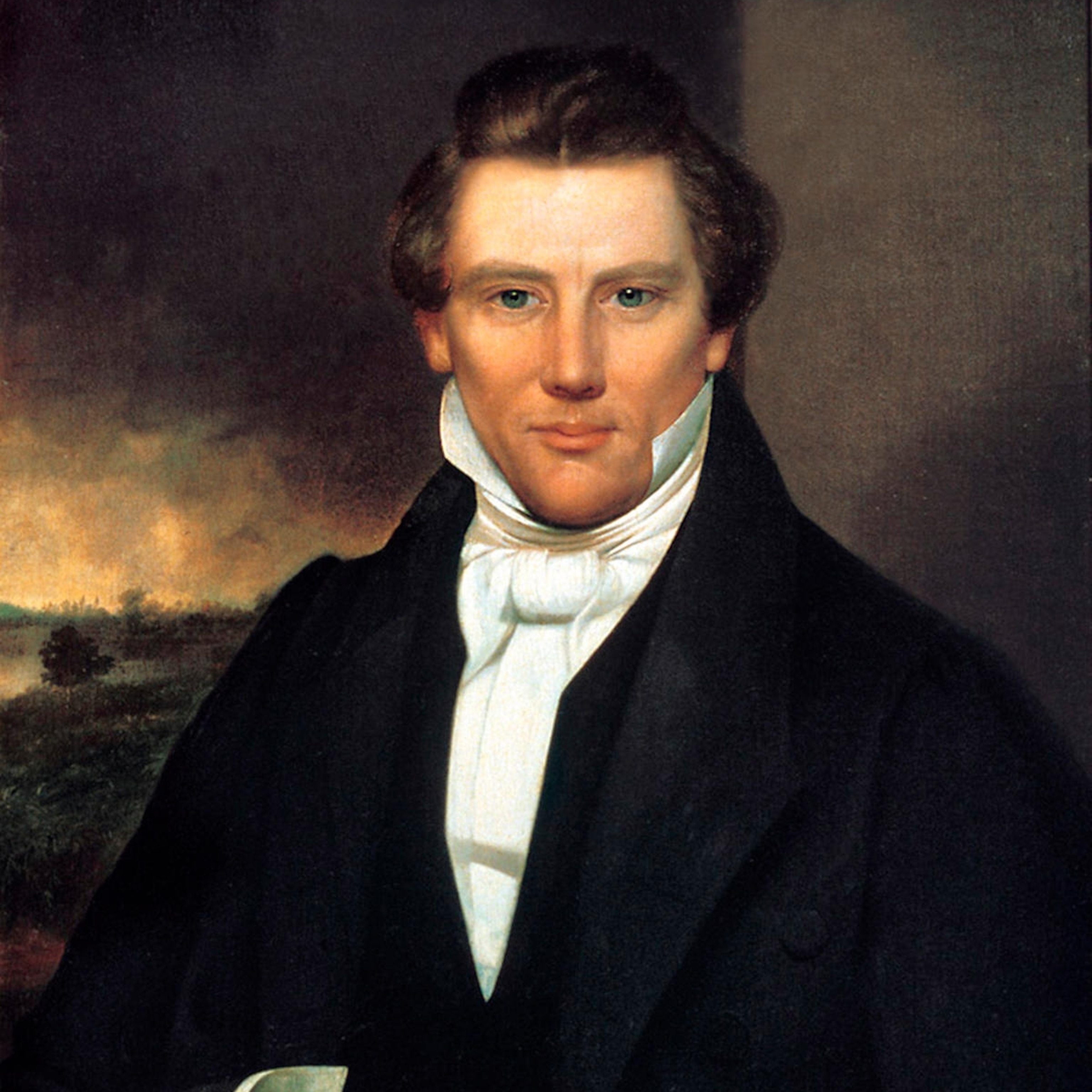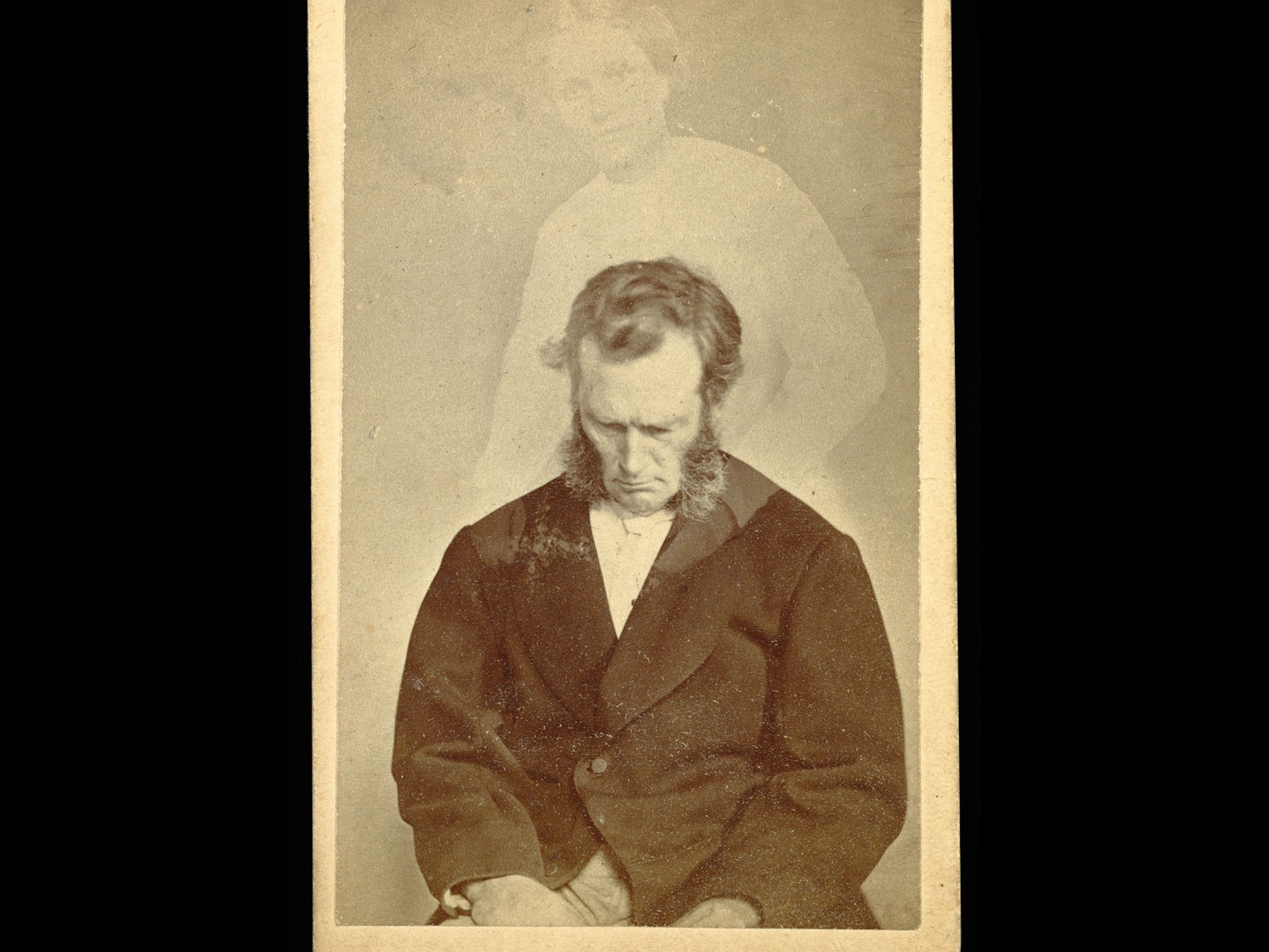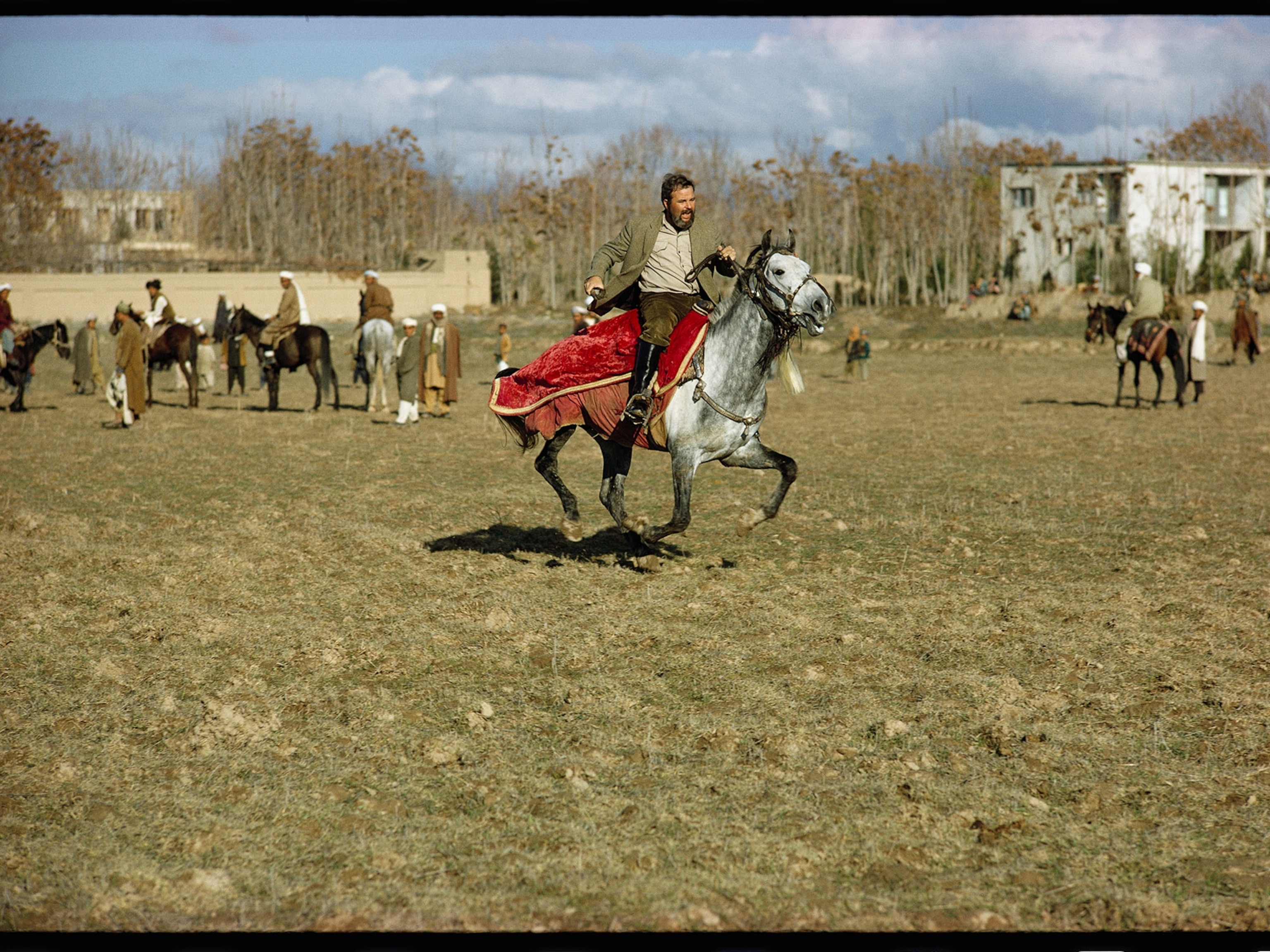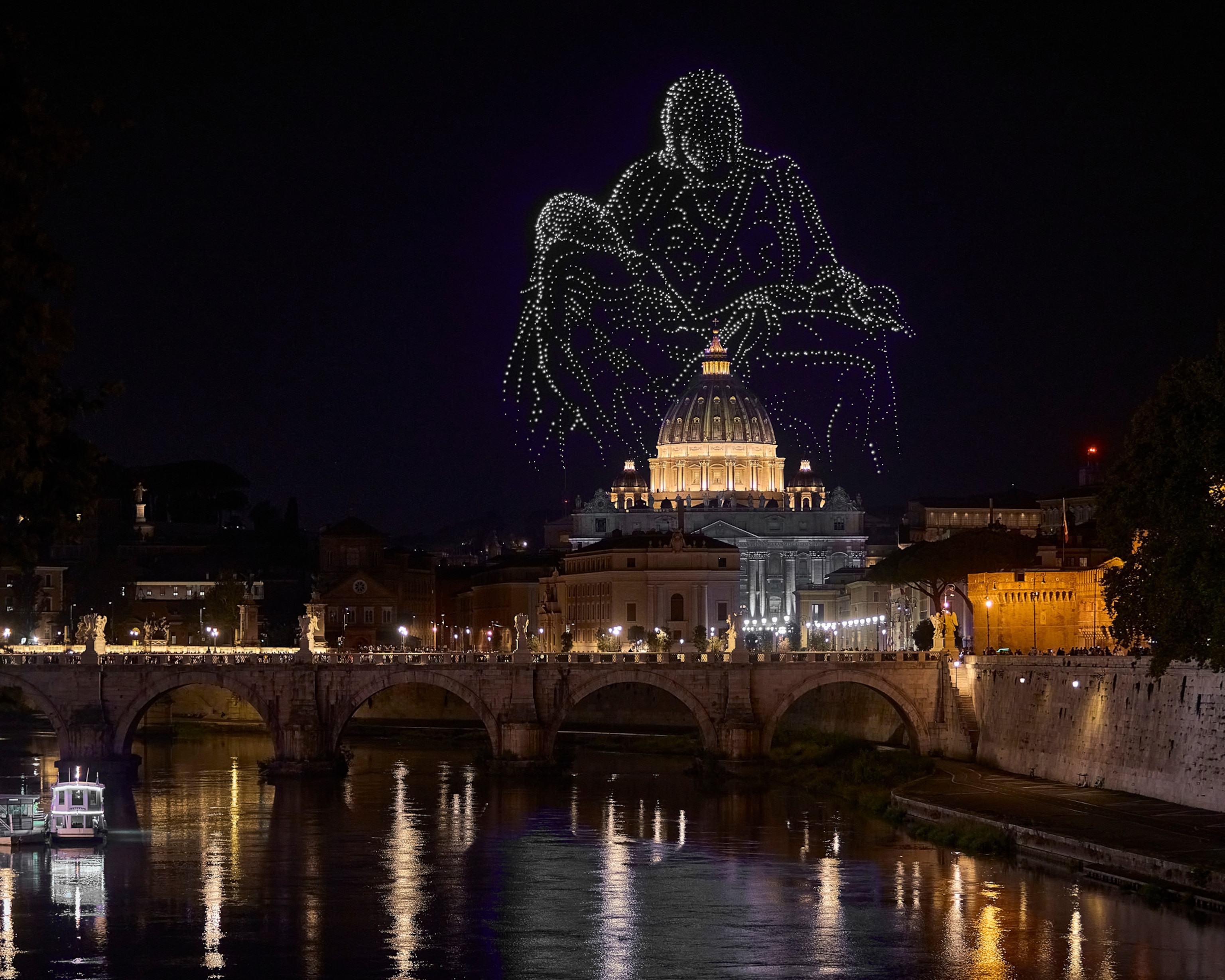
How 3,000 drones recreated Michelangelo’s masterpieces above the Vatican
The lightweight tech is custom-made, with drones swapping in and out seamlessly to create halos of light—and the hand of God.
Vatican City — The last time tens of thousands of people packed into St. Peter’s Square in Rome, it was to see the white smoke announcing the election of a new Pope, Leo XIV. And on Saturday evening, the crowds reappeared to witness something quite spectacular in honor of the Catholic Church’s Jubilee Year: a drone show inspired by Michelangelo’s 16th-century “The Creation of Adam” on the ceiling of the Sistine Chapel.
The drone show—the biggest in Europe—was orchestrated by Kimbal Musk’s Nova Sky Stories with permission from The Holy See, which broke with centuries of tradition to allow the light display to accompany "Grace for the World," the first concert ever held in St. Peter’s Square, directed by American singer Pharrell Williams and Italian tenor Andrea Bocelli.
As a mesh of choirs filled the piazza with inspired song—William’s hip-hop Voices of Fire choir brought a bit of Gospel while John Legend sang “Bridge Over Troubled Water” and Jennifer Hudson performed a fiery duet with Bocelli—3,000 drones swarmed into place above the basilica to reproduce the famous finger-touch of God creating Adam, along with a drone version of the Pieta and a portrait of the late Pope Francis.
As the tiny points of light appeared and arranged into each new configuration, the crowd roared: first at the three-dimensional heart, then at the doves of peace and the halos that crowned the famous church.

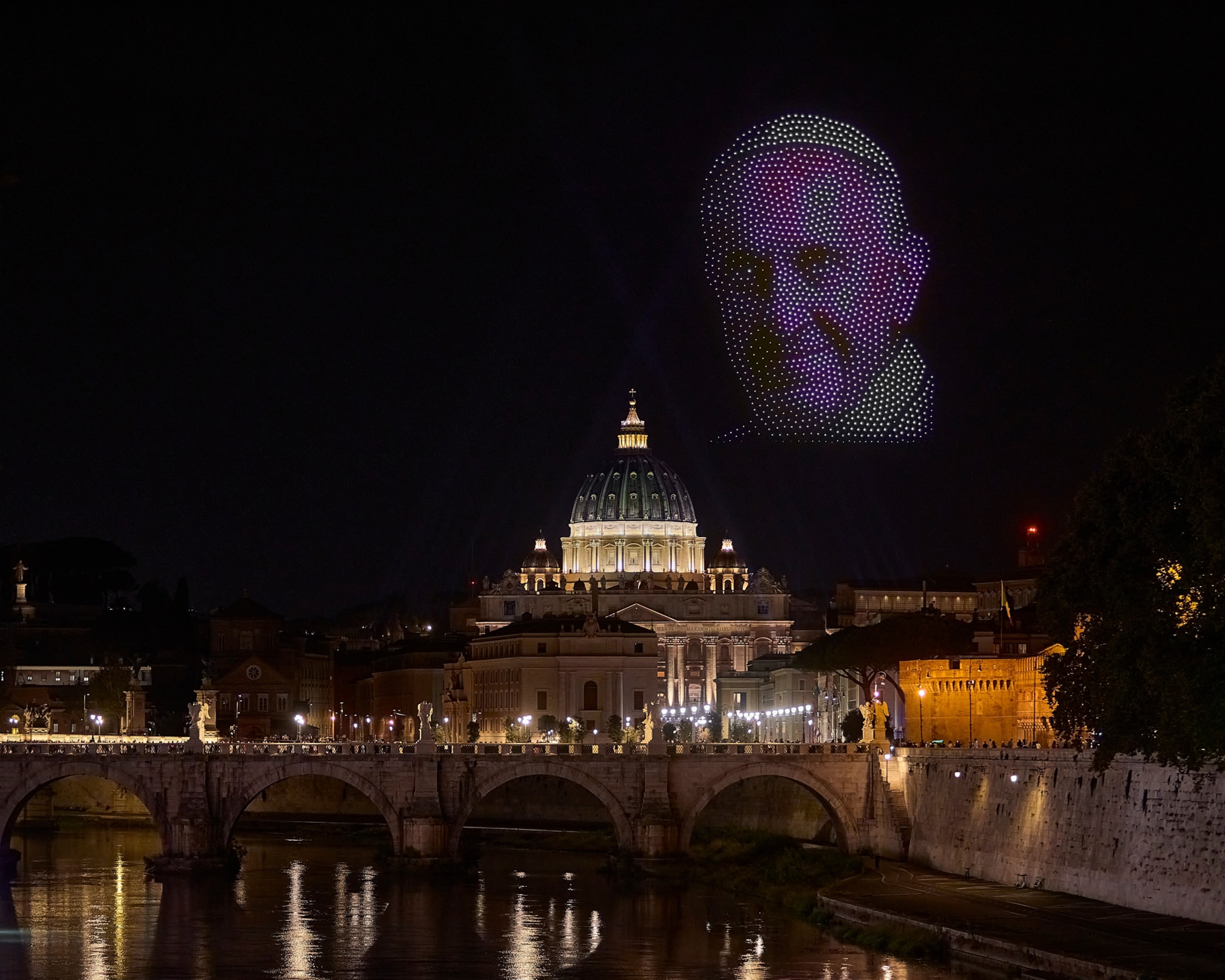

The evening—which was marked by inspirational speeches on peace and unity from cardinals and clerics, from activists like Graça Machel Mandela, and from Williams—ended with a giant drone rendition of the word ‘JOY’ filling the skies.
It was a moment that had been almost two years in the making, and one that marked the advent of what Nova hopes is a golden age of artistic creations made entirely from the pinprick lights of their tiny drones.
Creating a thousand points of light
A few days before the show, in pods spread around Vatican City’s rarely used train tracks and a closed-off parking lot, Nova’s drones buzzed in their chargers like worker bees in a high-tech honeycomb, powering up ahead of the big day.
The drones are small, weighing just 12 ounces apiece, but with the capacity to create 16 million colors. They are the brainchild of CEO Kimbal Musk, Elon Musk’s younger brother, who first approached the Vatican with the idea for a light display in early 2024, when Pope Francis was still alive. That kicked off 18 months of what now seem like miracles to the Nova crew: securing permissions, negotiating access, and planning detailed site visits to one of the most secretive places on Earth.
Midway through, the group faced momentary uncertainty with the death of Pope Francis and the election of the first American pope, whom Kimbal Musk says wrote them a meaningful letter, essentially blessing the idea to carry the plans forward.
The technology to run the drones is unique to the Nova Sky Stories team in that they manufacture their own drones and keep all the development of software, hardware and firmware in house. That means any troubleshooting can be done on the spot. There’s no calling a helpline as the engineers and programmers involved are part of the core team, a group of around 60 people.
Backstage at the train-track airfield, Jeremy Stein, Chief Executive Producer at Nova Sky Stories, held a drone like it was a toy, touching the propellers and turning it upside down before placing it back in its charging bay. What makes the company unique in the size and scale of shows they do all over the world, he said, is that their drones are specially built, rather than relying on refitted heavy drones originally designed for military or surveillance.
“Top to bottom is all in one ecosystem. Nothing gets farmed out,” Stein told National Geographic. “And that creates an accelerated curve of development that was a big part of our vision. Because when anything is new, like the Vatican show and its particular challenges, for example, we're not calling a different company for guidance.”
The Nova drones can run a two-hour show on multiple radio and GPS frequencies, utilizing the best satellite signals available, including dedicated satellites none of the team is eager to discuss openly for security reasons. The group uses a technology called RTK or Real Time Kinetics, which enables the extraordinary resolution that looks like real images floating in the sky.

The drones take a few breaks for recharging, but the audience won’t know that; of the 3,500 drones being charged, only 3,000 will be in the air at any given time. They are programmed to return to their base to charge, and after about half an hour, fly back and swap out with another one. If a drone goes rogue, usually knocked out by a wind gust, it will first try to find its programmed position. If it cannot, it is programmed to return to base. If it is really lost and leaves the safety perimeter—an area around the main drone performance sky stage where no one can be seated below—its engine will shut off and it is supposed to come down safely. Because they are so light, Stein says, there is little chance that they could hurt anyone if they somehow fail to shut down.
New works of art—with drones
As exciting as Nova’s technology is, Musk and the other executives don’t want to focus exclusively on that. “I think I'm a very unique person that I have such a deep working knowledge of AI through Tesla and xAI,” Musk told National Geographic ahead of the show. (Musk sits on the board of Tesla, which his brother founded, and which is considering an investment in Elon’s artificial intelligence company xAI.) “And then I'm an artist and I'm a musician and I get to play with this incredible entertainment medium. But I don't idolize technology,” Kimbal Musk said. “I idolize the outcome, the output. It’s more how you harness the technology.”
Musk is more interested in using the drones as art, to create emotion and turn them into a recognizable art medium. He likens drone technology today to the advent of modern movie-making in the 19th century with endless possibilities to incorporate AI and emerging technologies. But it will still take creative human minds to bring the technology to life. “The artists are, if anything, frustrated with AI right now,” he noted. “But you can watch it change and get better and better and better.”
When the show focused on a tribute to the late Pope Francis with Italian tenor Bocelli signing “Amazing Grace,” Musk hoped the audience would feel the emotion—and they did. There was a notable silence when Francis’ face appeared, followed by hearty applause. “Honestly, people were asking me, what do I want to do with the show,” Musk said before the performance. “You can blow people away with drones, but really, if we can make grandma cry… Yeah, you want to touch their emotions.”
Don Degnan, Nova Sky Stories Chief Strategy Officer likens the drones to pixels or even the paintbrushes that Michelangelo used to paint the Sistine Chapel ceiling. What matters is what the artist can do with them. To fly a drone show at the Vatican, at the epicenter of centuries of artistic creation, seemed a natural complement, he said.
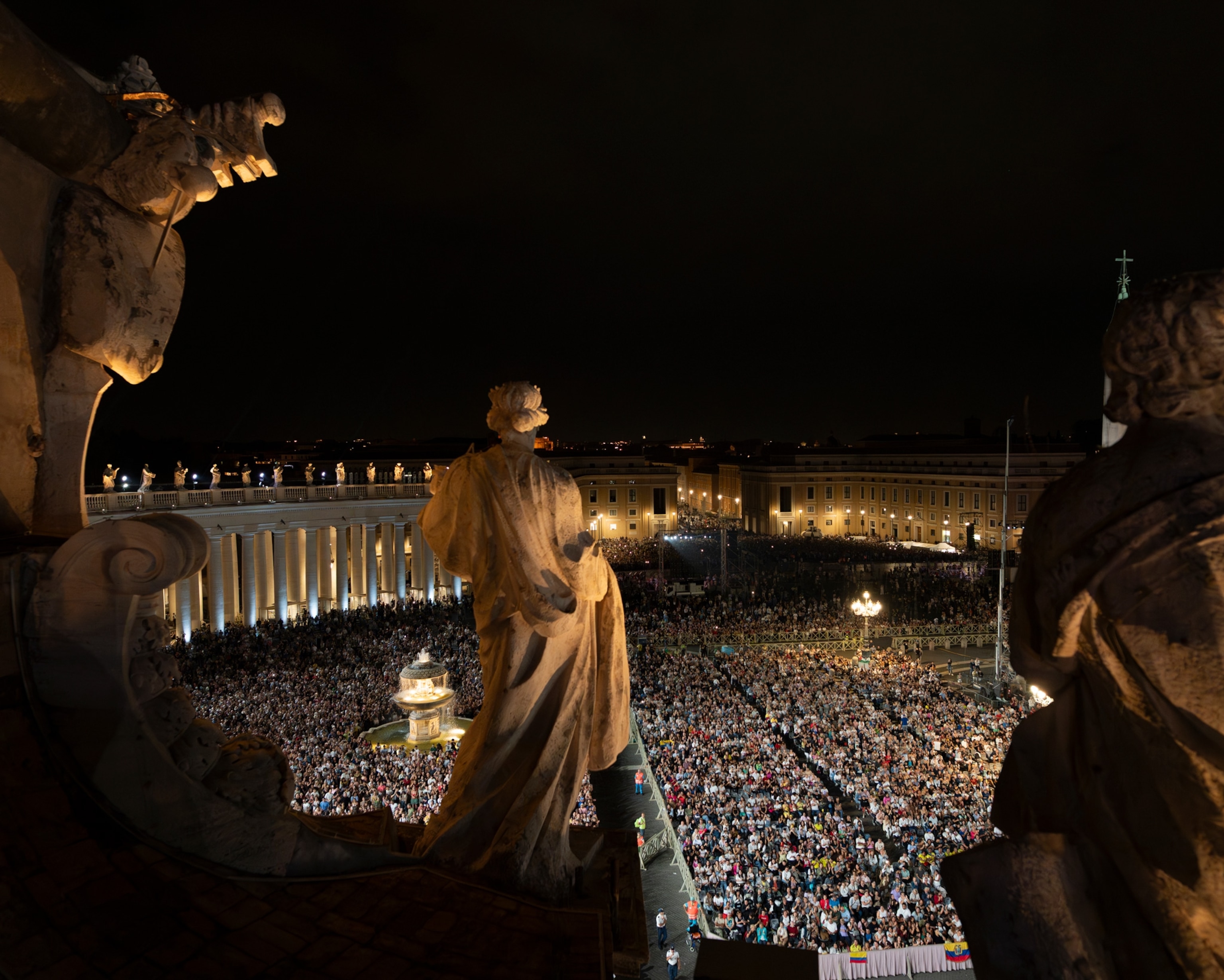
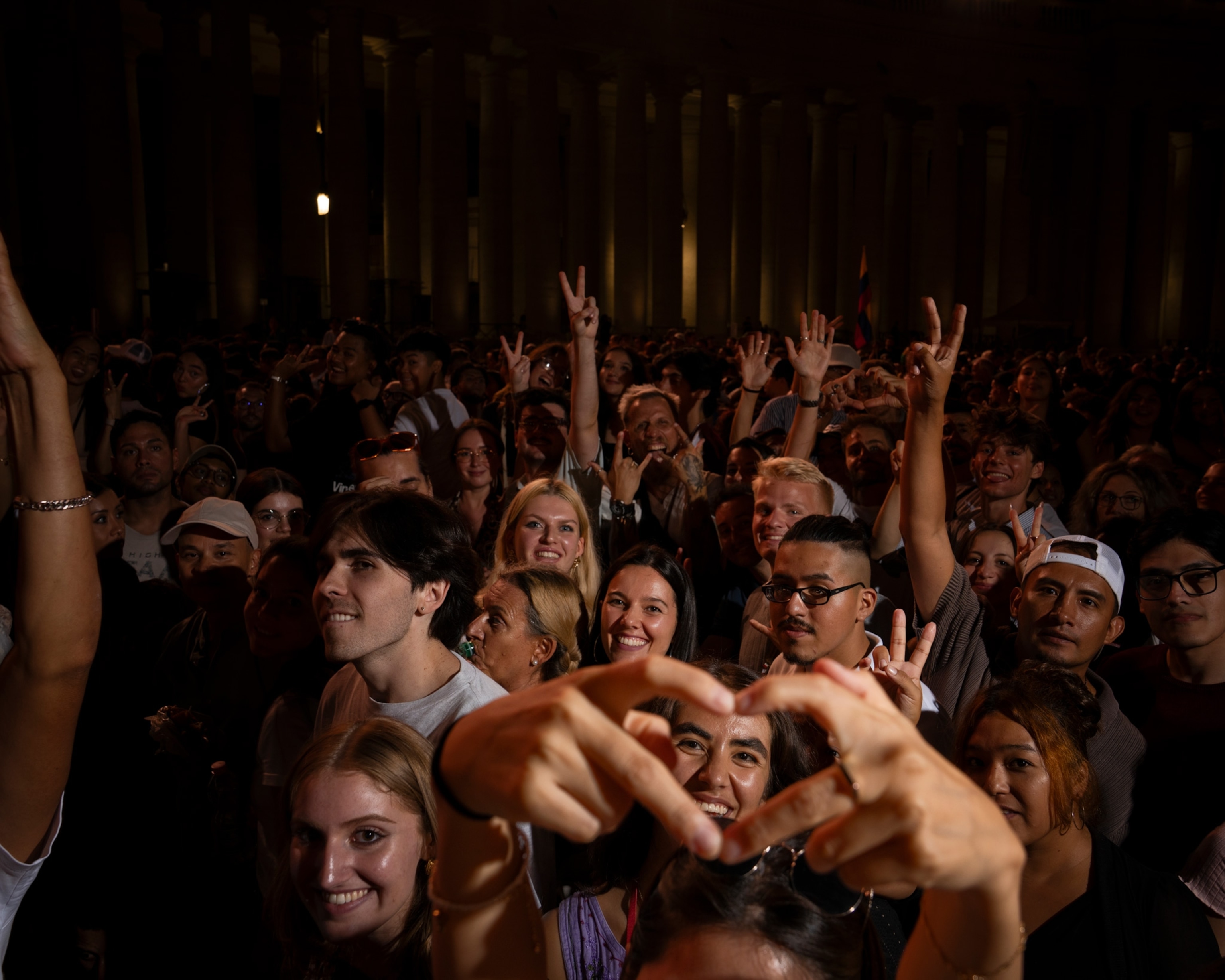

“Now we get to marry this iconic Old-World epicenter with our scale. This is a crazy scale with this new drone technology that we believe delivers amazing immersive art at a scale similar to [the Sistine Chapel],” he said. “The first time you really see it, your brain doesn’t really process or get it because it’s overwhelming…. My brain's never seen that before. Like, what is that?”
Throughout the concert, which lasted for more than two hours, spectators sang and danced in the aisles—a rarity for Vatican events. The performers noted how special it was to perform in the famous square and thanked Pope Leo, who did not personally appear but who approved everything from the lyrics to the prepared speeches. The show was a risk for the Vatican, sure to provoke naysayers. And yet, as the crowd dispersed into the night, there was an overall sense of awe, joy—and even tenuous hope.

